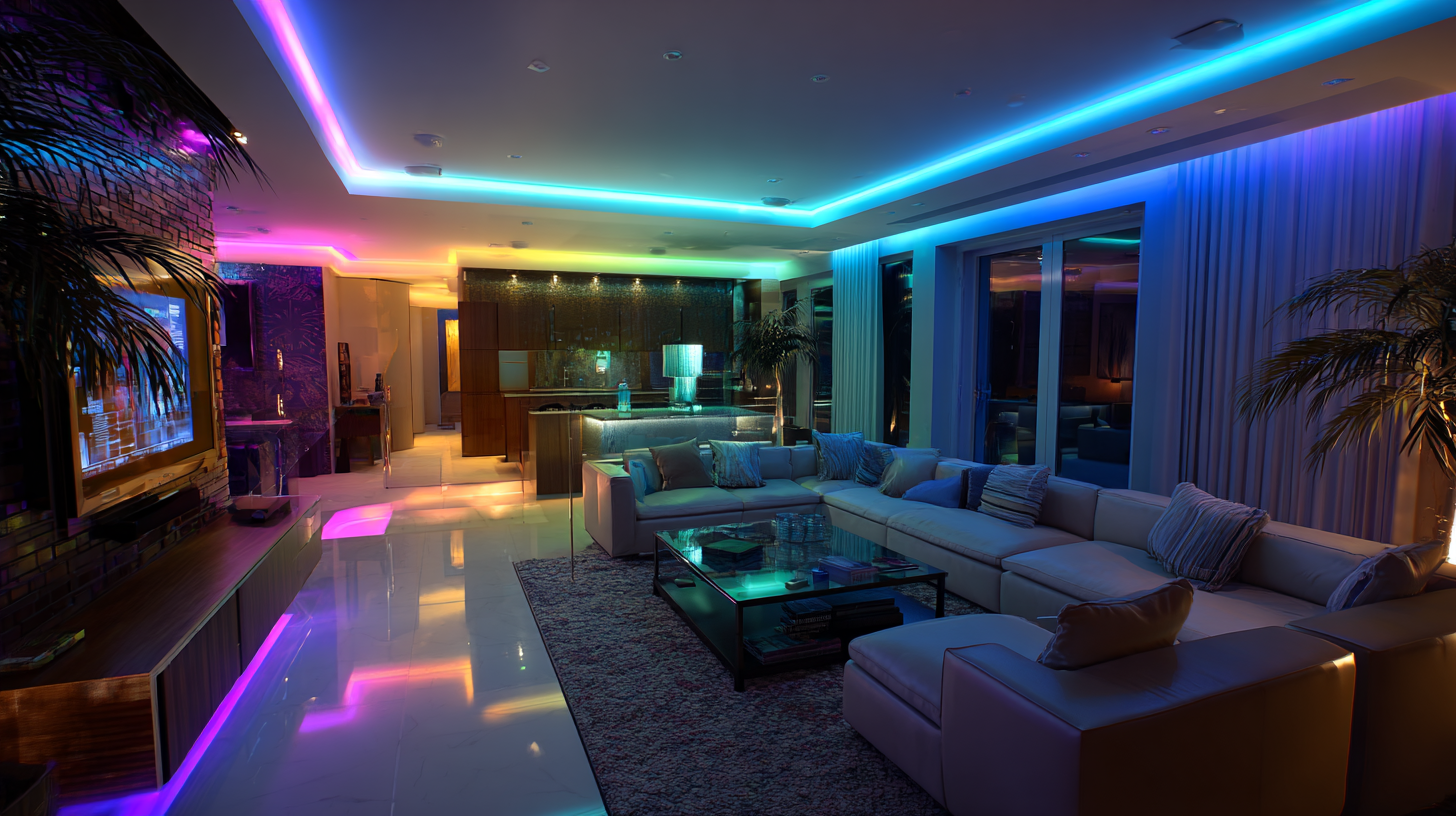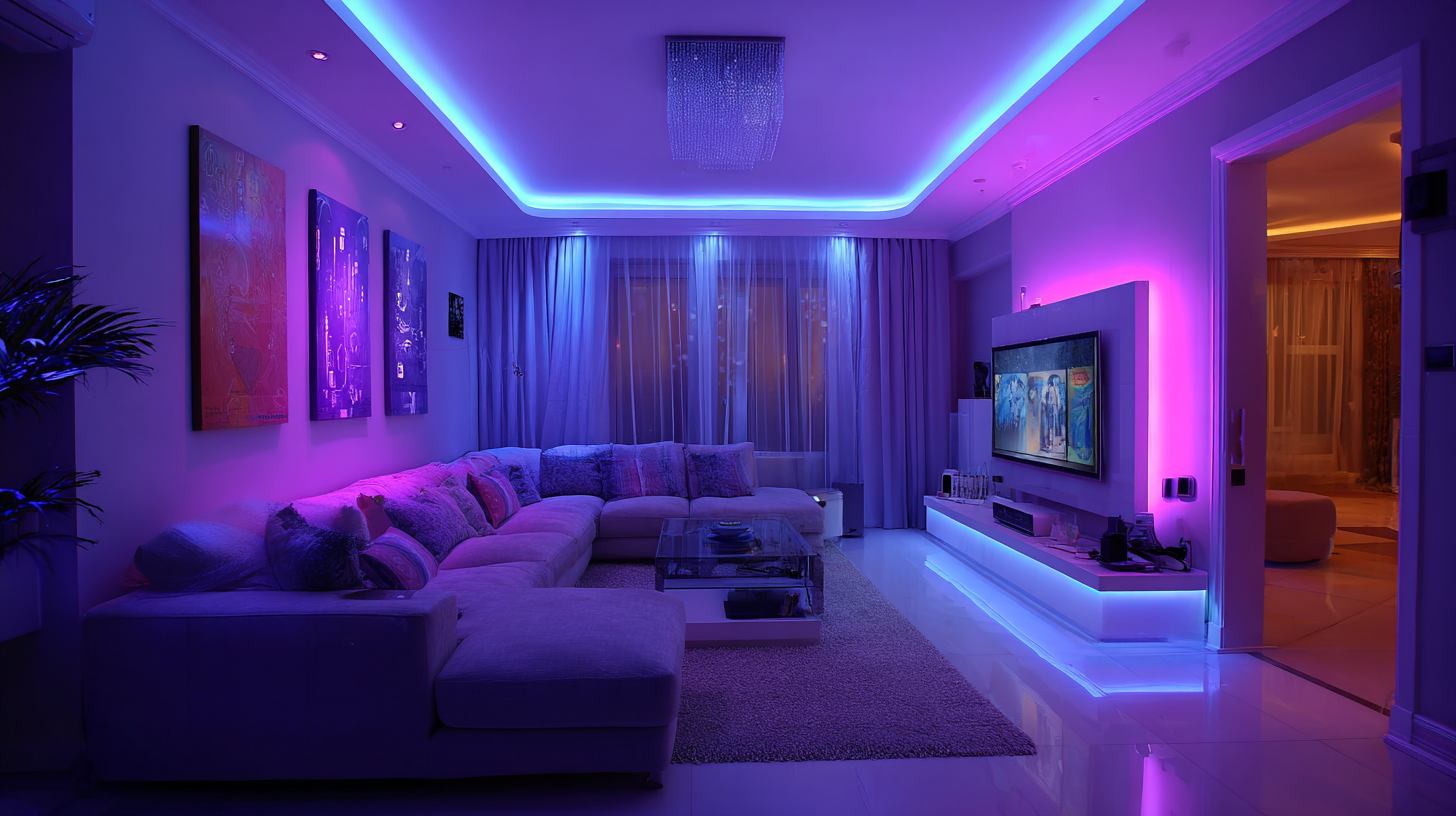Navigating the Future of Best Led Bathroom Lights Trends and Buying Guide for 2025
As we look ahead to 2025, the bathroom lighting industry is undergoing significant transformation, driven by advancements in technology and changing consumer preferences.
According to a recent report by Grand View Research, the global LED lighting market is expected to reach
$105.5 billion by 2025, with residential lighting, particularly LED bathroom lights, contributing significantly to this growth.
Homeowners are not only seeking energy-efficient solutions but also designs that enhance the ambiance and functionality of their spaces.
Additionally, the growing trend towards smart homes is propelling innovations in LED technology, integrating features such as adjustable brightness and color temperature control.
As we navigate the future of bathroom lighting, understanding these trends and making informed purchases will be essential for those looking to illuminate their bathrooms with the best LED options available.

Emerging Trends in LED Bathroom Lighting for 2025: Key Innovations and Styles
As we advance into 2025, the world of LED bathroom lighting is witnessing exciting innovations and emerging trends that promise to enhance both functionality and aesthetics. The latest industry reports indicate that the global LED lighting market is projected to reach $105 billion by 2025, with a significant portion attributed to the residential sector, particularly bathroom lighting. This shift is largely driven by the demand for energy-efficient solutions that do not compromise on style or performance.
One notable trend gaining momentum is the integration of smart technology into LED bathroom lights. According to a recent study by Technavio, the smart lighting market is anticipated to grow at a CAGR of 24% through 2025, with smart mirrors and adjustable light settings becoming increasingly popular among homeowners. These features allow for tailored lighting experiences that cater to different moods and tasks, from bright illumination for grooming to softer tones for relaxation.
Additionally, the use of sustainable materials in LED fixtures is on the rise. A report by the International Energy Agency highlights that eco-friendly designs not only reduce carbon footprints but also resonate well with environmentally conscious consumers. As a result, designers are incorporating recycled materials and energy-efficient components in their products, further solidifying the connection between style and sustainability in modern bathroom lighting solutions.
The Impact of Energy Efficiency Regulations on LED Bathroom Fixtures in 2025
 As we look towards 2025, energy efficiency regulations are set to significantly impact the market for LED bathroom fixtures. According to recent reports from the Department of Energy, by 2025, lighting accounts for approximately 15% of the average American household's energy consumption. The implementation of stricter efficiency standards will push manufacturers to innovate and offer products that not only comply but also exceed these new requirements, making LED lighting a more attractive option for eco-conscious consumers.
As we look towards 2025, energy efficiency regulations are set to significantly impact the market for LED bathroom fixtures. According to recent reports from the Department of Energy, by 2025, lighting accounts for approximately 15% of the average American household's energy consumption. The implementation of stricter efficiency standards will push manufacturers to innovate and offer products that not only comply but also exceed these new requirements, making LED lighting a more attractive option for eco-conscious consumers.
When selecting LED bathroom lights, consider fixtures meeting the latest Energy Star ratings, which certify that products use at least 20% less energy than non-rated options. Additionally, with advancements in smart technology, integrating intelligent lighting systems that allow for dimming and scheduling can further enhance energy savings.
Tip: Always look for the lumens-per-watt ratio when shopping for LED fixtures; a higher ratio indicates a more efficient light source. Also, consider the color temperature of the lights – warmer tones can create a soothing atmosphere perfect for bathrooms while still maintaining energy efficiency. Choosing the right type of LEDs could not only lower your energy bills but also contribute to a stylish and functional bathroom environment.
Case Studies: Successful Applications of LED Lighting in Modern Bathrooms
LED lighting has transformed modern bathrooms, offering both functionality and style. One successful case study is a contemporary spa-inspired bathroom that utilized adjustable LED recessed lighting. This approach highlights key features like a soaking tub and a sleek vanity while allowing users to change the mood from bright and invigorating to soft and relaxing. The versatility of LED lights can enhance the ambiance depending on the time of day or the specific activities planned.
When selecting LED lighting for a bathroom, consider these tips: Firstly, prioritize waterproof and moisture-resistant fixtures to ensure safety and longevity. Secondly, think about layering your lighting; combining ambient, task, and accent lighting can create a harmonious and inviting space. Lastly, opt for dimmable options, which provide flexibility to adjust brightness for various moods and needs, from morning routines to evening relaxation.
Another effective application can be seen in a minimalist bathroom design that features LED strip lighting along shelves and mirrors. This method not only provides adequate illumination for grooming tasks but also adds a touch of elegance. Such innovative uses of LED lighting continue to define the trends in bathroom design, making them both practical and aesthetically pleasing.
Navigating the Future of Best Led Bathroom Lights Trends and Buying Guide for 2025
| Feature |
Importance Level |
Trend Examples |
Application Case Study |
| Energy Efficiency |
High |
Smart LED bulbs with low power consumption |
Home renovation with automatic dimmers |
| Color Temperature Control |
Medium |
Adjustable warm/cool light settings |
Modern apartments with customizable atmosphere |
| Smart Technology Integration |
High |
Voice-controlled lighting systems |
Luxury homes with IoT integration |
| Minimalist Design |
Medium |
Sleek lines and concealed fixtures |
Small urban apartments enhancing space |
| Sustainability |
High |
Recyclable and eco-friendly materials |
Eco-conscious builds with green approvals |
How to Choose the Right Color Temperature for Your LED Bathroom Lights
When choosing the right color temperature for your LED bathroom lights, it’s essential to consider the ambiance you wish to create. Bathroom lighting typically falls within three main color temperature categories: warm white (2700K-3000K), neutral white (3500K-4100K), and cool white (5000K-6500K). Warm white lighting provides a cozy and inviting atmosphere, ideal for a relaxing bath experience. It enhances the natural tones of skin and creates a soothing environment, perfect for winding down at the end of the day.
Conversely, if your goal is to achieve a more vibrant and energetic space, neutral or cool white lights may be the better choice. Neutral white maintains a balance that is great for general tasks, such as applying makeup or grooming, providing clarity without being too harsh. Cool white, on the other hand, mimics daylight, making it suitable for activities requiring precision and focus. When selecting LED bathroom lights, think about how the color temperature will affect not only the functionality but also the overall aesthetic of your space. Combining different temperature lights at various points can enhance both practicality and ambiance.

Understanding the Importance of CRI in Enhancing Bathroom Ambiance with LEDs
When it comes to enhancing the ambiance of your bathroom, Color Rendering Index (CRI) plays a crucial role, especially with LED lighting. CRI measures a light source's ability to accurately reveal the true colors of objects in comparison to natural light. For spaces like bathrooms, where clarity and color accuracy are essential for daily activities such as grooming, high CRI lighting becomes indispensable. A CRI rating of 90 or above is often recommended to ensure that the hues of skincare products, towels, and walls appear as intended, creating a pleasing atmosphere that elevates your bathroom experience.
In 2025, consumers are expected to prioritize LED bathroom lights with higher CRI ratings. As trends evolve, more manufacturers are likely to focus on producing lights that provide not just energy efficiency but also superior color fidelity. By selecting LED lighting with a high CRI, homeowners can transform their bathrooms into vibrant, inviting spaces that feel more like a personal oasis. Whether it’s a warm glow for relaxation or bright, crisp light for detail-oriented tasks, understanding CRI will empower buyers to make informed decisions that enhance both aesthetics and functionality in their bathrooms.
Navigating the Future of Best Led Bathroom Lights Trends and Buying Guide for 2025

Home
About Byone
Factory Tour
Products
Project Portfolio
Download
Blog
Contact Us

 As we look towards
As we look towards 